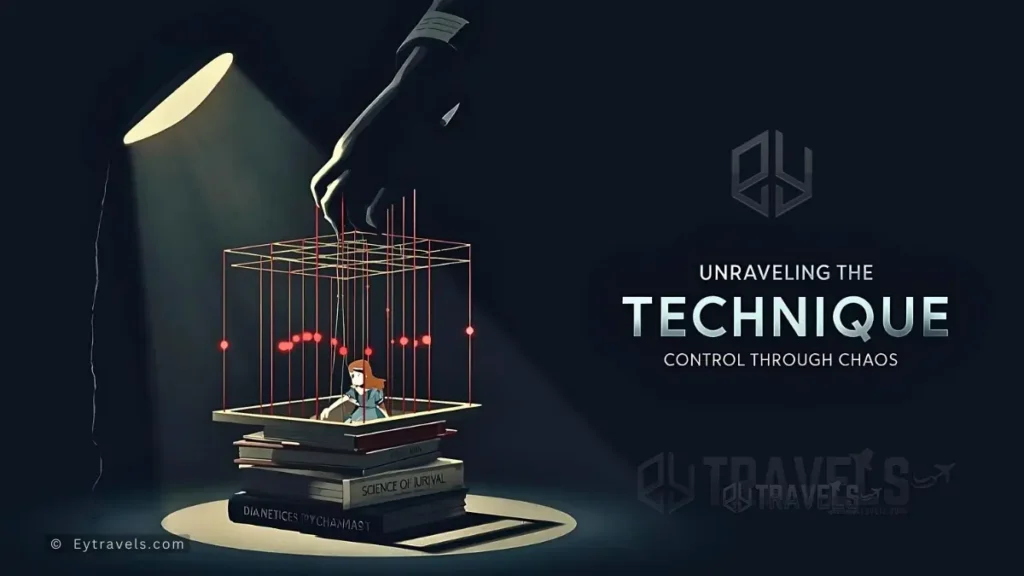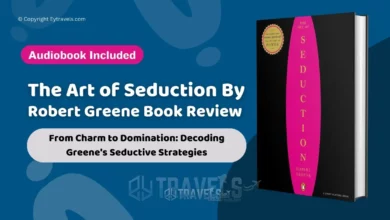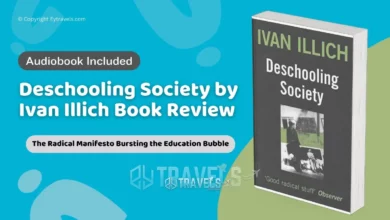The Alice in Wonderland Technique Exposed: L. Ron Hubbard’s Controversial Mind Control Blueprint
A Technique Born from Wonderland's Madness
Lewis Carroll’s Alice in Wonderland is a whimsical journey into a world where logic unravels and reality shifts. But what if that disorienting chaos wasn't a fantasy, but a deliberate weapon? Enter the “Alice in Wonderland Technique,” a concept not from a standalone book, but a disturbingly detailed method of psychological manipulation and mind control described by L. Ron Hubbard, the founder of Dianetics and Scientology, primarily within his seminal 1951 work, “Science of Survival: Prediction of Human Behavior.”
Hubbard didn't present this as a therapeutic tool for self-improvement. Instead, he framed it as a dangerous method used by shadowy enemies – psychiatrists (“psychs”), authoritarian governments, and “suppressive persons” – to shatter human minds. Yet, his meticulous description of how it works reads like a blueprint for profound psychological abuse.
The Alice in Wonderland Technique: L. Ron Hubbard's Controversial Mind Control Blueprint Exposed
This article focuses on the origins, mechanics, stated purpose, psychological underpinnings, ethical quagmires, and lasting controversy surrounding Hubbard's Alice in Wonderland Technique. We'll dissect its claims, assess its plausibility through a modern psychological lens, and confront the unsettling questions it raises about control, reality, and the potential for harm embedded within Hubbard's vast body of work.
Origins and Context: Born from Hubbard's “Science of Survival”
To understand the AiW Technique, we must first understand its source: “Science of Survival” (SOS). This book is a cornerstone of early Scientology doctrine. Hubbard introduced the “Tone Scale,” a hierarchical chart purportedly mapping all human emotions and behaviors from a high state of “Serenity of Beingness” down to a low state of “Body in Death.” Hubbard claimed that by knowing a person's position on this scale, one could predict their behavior and interactions.
It was within this framework, particularly in the lower ranges of the Tone Scale (Apathy, Grief, Fear, Anger), that Hubbard introduced the AiW Technique. He presented it as:
- An Exposé: Hubbard positioned himself as a whistleblower, revealing the insidious methods used by “psychs” and intelligence agencies to deliberately drive people insane or create obedient automatons. He claimed psychiatry routinely employed such destructive tactics.
- A Warning: SOS served as a cautionary tale for Scientologists, urging them to recognize and avoid these techniques used by their perceived enemies.
- (Implied) Potential Tool: While primarily a warning, Hubbard's detailed description of the mechanics, coupled with discussions on handling “low-tone” individuals, left the door open for its potential application within Scientology's own auditing or ethics procedures, albeit framed as a dangerous last resort.
The technique's name itself is a direct and potent metaphor, evoking Alice's bewildering journey where nothing is stable, rules are inverted, and her very sense of self is challenged – precisely the state Hubbard aimed to describe.
Key Takeaways: Unraveling the Technique's Legacy
- Not a Book, But a Dangerous Concept: The “Alice in Wonderland Technique” is not a standalone Hubbard book but a detailed method of psychological manipulation described within “Science of Survival” and other Scientology materials.
- Core Mechanism: Relentless Contradiction: Its essence is the systematic and absolute invalidation of a person's perceptions, memories, logic, and identity to induce profound confusion and disorientation.
- Hubbard's Dual Role: Hubbard presented it primarily as a weapon used by psychiatrists and governments (a warning to Scientologists) but provided its detailed mechanics within his own doctrine, implying potential application.
- Partial Plausibility, Grandiose Claims: While inducing confusion through invalidation is a known abusive tactic, Hubbard's claims about its ability to completely erase identity and implant new personalities are pseudoscientific exaggerations.
- Profoundly Unethical: The technique, as described, constitutes severe psychological abuse, violating autonomy, dignity, and carrying high risks of long-term harm. Its detailed exposition within Hubbard's work is ethically indefensible.
- Enduring Controversy: The AiW Technique remains a focal point for critics alleging coercive practices within Scientology, while the Church denies its use and maintains Hubbard exposed it solely as an enemy tactic. It stands as a stark symbol of the potential dangers lurking within Hubbard's teachings.
Mechanics of Madness: How the Technique Works (According to Hubbard)
Hubbard outlined the AiW Technique with chilling precision. Its core objective is the systematic destruction of an individual's sense of reality, personal identity, and critical thinking abilities, rendering them highly suggestible and dependent. Here's the step-by-step breakdown:
Relentless Contradiction and Invalidation
This is the engine of the technique. The practitioner systematically and absolutely contradicts everything the subject says, perceives, remembers, or believes.
- Perception: “The sky is blue.” “No, it's distinctly green.” “I feel cold.” “You are obviously feeling hot.”
- Memory: “I had a happy childhood.” “Your childhood was filled with trauma and misery.” “I remember winning that race.” “You lost that race humiliatingly.”
- Logic: “If A equals B, and B equals C, then A equals C.” “That's illogical. A does not equal C under any circumstances.”
- Identity: “I am John Smith.” “No, you are not John Smith. You are someone else entirely.” “I feel sad.” “You do not feel sad; you feel angry.
Undermining Reality and Certainty:
The goal is to attack the very foundations of the subject's world. Basic sensory input, established facts, logical reasoning, and the core sense of “I” are all targets. Nothing is stable; nothing can be trusted – not even one's own mind.
Inducing Profound Confusion and Disorientation:
By constantly pulling the rug out from under the subject's feet, the practitioner aims to induce a state of overwhelming confusion, anxiety, and disorientation. Hubbard explicitly compared this to Alice's experiences in Wonderland. This state, he claimed, pushes the individual down the Tone Scale into Apathy or even lower states of unconsciousness or “death.”
Exploiting Vulnerability:
Hubbard noted the technique is most effective when the subject is already vulnerable – exhausted, grieving, under physical or emotional stress, ill, or under the influence of drugs or alcohol. Their defenses are naturally lower.
Repetition and Authoritarian Delivery:
The contradiction isn't offered as a point for discussion; it's delivered as absolute fact, with unwavering certainty and often in an intense, confrontational, or seemingly authoritative manner. The sheer persistence wears down resistance.
The “Blank Slate” Objective (Stated):

Hubbard claimed the ultimate goal of this process, as used by enemies, was to render the individual a “blank slate” – obliterating their existing personality, memories, and unwanted traits (like criminality or “insanity”). Once this state of profound apathy and confusion was achieved, the practitioner could then implant new ideas, beliefs, identities, or behaviors more easily.
Hubbard's Stated Purpose: Weapon or Warning?
Hubbard's presentation of the AiW Technique was deliberately ambiguous:
- Primary Stance: A Weapon of the Enemy: Hubbard spent significant effort in SOS and lectures detailing how “psychs” and governments used this technique to create social unrest, control populations, and deliberately drive people insane. He framed it as a primary tool of the “psychopolitical” enemy he constantly railed against. For Scientologists, it served as a powerful justification for Hubbard's “Standard Tech” – the only safe and effective alternative to the destructive practices of psychiatry.
- Secondary Stance: A Potential (Dangerous) Tool: While warning against its misuse, Hubbard also described scenarios where elements of contradiction or challenging fixed ideas might be necessary within auditing to break through a preclear's deeply ingrained, irrational “engrams” or “service facsimiles.” He emphasized this required extreme skill and risked driving the preclear further down the Tone Scale if done incorrectly. He claimed proper Scientology auditing aimed to increase certainty and reality, not destroy it, positioning AiW as the destructive antithesis.
This duality is key: Hubbard exposed a horrific method while simultaneously providing its detailed mechanics within his own system, leaving room for interpretation and potential application under the guise of “handling” difficult cases.
Psychological Plausibility: Fact or Pseudoscience?
How does Hubbard's description hold up under modern psychological scrutiny?
- Elements with Basis in Psychology: The core idea that persistent contradiction, invalidation, and gaslighting can induce confusion, anxiety, loss of confidence, and heightened suggestibility is psychologically sound. These tactics are hallmarks of:
- Gaslighting: A form of emotional abuse where the abuser manipulates the victim into doubting their own reality, memory, or perceptions.
- Coercive Persuasion/Thought Reform: Techniques used in some high-control groups or interrogations to break down identity and instill new beliefs, often involving isolation, control of information, and attacks on self-concept.
- Sensory Deprivation/Overload: While not identical, the constant bombardment of contradictory input can overwhelm cognitive processing, leading to disorientation similar to sensory overload.
- Inducing a State of “Not Knowing”: Interrogation techniques sometimes aim to create confusion and dependency to elicit information or compliance.
- Hubbard's Specific Claims: Pseudoscientific Exaggeration: Where Hubbard ventures far beyond established science is in his claims about the extent and permanence of the technique's effects:
- Complete Personality Erasure: Modern neuroscience and psychology do not support the notion that such a technique can completely and permanently erase an individual's core personality, identity, and vast memory stores, creating a true “blank slate.” Personality and identity are complex, multi-layered constructs involving biological, neurological, and experiential factors not so easily obliterated.
- Rapid, Controlled Implantation: The idea that new, complex identities or behaviors can be reliably and permanently implanted after this breakdown, especially against the individual's core values or biology, is unsupported. While suggestibility increases in confused states, long-term, deep-seated change typically requires far more complex conditioning and reinforcement, not just a single session of contradiction.
- Link to Engrams and the Tone Scale: Hubbard's explanation why it works – targeting “entheta,” “engrams,” or forcing someone down the Tone Scale – is rooted in Dianetics/Scientology's pseudoscientific framework. These concepts lack empirical validation and are not recognized by mainstream science.
Conclusion on Plausibility: The AiW Technique, as a method for inducing acute confusion, distress, and temporary suggestibility through relentless invalidation, has a basis in known psychological principles of manipulation and abuse. However, Hubbard's claims about its ability to completely erase identity and implant new personalities are scientifically unfounded exaggerations rooted in his own unverified doctrines.
Ethical Quagmire: A Blueprint for Psychological Torture
Regardless of its claimed origins or Hubbard's warnings, the detailed description of the AiW Technique presents profound and undeniable ethical problems:
- Inherent Psychological Abuse: The technique, as described, is a clear and deliberate form of psychological torture. It systematically attacks the fundamental pillars of human experience: perception, memory, logic, and self-identity. The intended outcome – profound confusion, apathy, and dependency – is intrinsically harmful.
- Violation of Autonomy and Dignity: It completely disregards the subject's autonomy, right to their own thoughts and feelings, and inherent human dignity. It treats the individual as an object to be broken and remolded.
- Lack of Informed Consent: Applying such a technique, even within a purportedly therapeutic or religious context, without explicit, fully informed understanding of its nature, purpose, and extreme risks is ethically monstrous. True consent is impossible under the conditions of vulnerability Hubbard described as optimal for its use.
- Potential for Severe Harm: The deliberate induction of extreme confusion, disorientation, and apathy carries a high risk of causing severe, long-term psychological damage, including PTSD, dissociative disorders, chronic anxiety, depression, and lasting impairment in reality testing and interpersonal functioning.
- Hubbard's Responsibility: By detailing the mechanics so explicitly within his own doctrine, even as a warning, Hubbard arguably provided a manual for abuse. The presence of such a destructive concept within a system promising spiritual freedom and mental health creates a dangerous contradiction and raises serious questions about judgment and intent.
Real-World Controversy and Allegations
The AiW Technique isn't just a theoretical concept; it's central to controversies surrounding Scientology:
- Critics and Former Members: Many ex-Scientologists and critics allege that Scientology itself employs tactics reminiscent of the AiW Technique, though often more subtly or within specific contexts:
- Auditing Interrogations: Intense “Security Checks” (Sec Checks) or handling of “Suppressive Persons” can involve relentless questioning, invalidation of the preclear's perceptions or justifications, and pressure to accept the auditor's reality or Hubbard's definitions.
- Ethics Actions: The Ethics system can involve constant invalidation of a member's doubts, criticisms, or experiences (“misunderstood word,” “overts,” “withholds”), labeling them as “PTS” (Potential Trouble Source) or “SP,” and creating an environment where the group's reality is the only valid one.
- Disconnection: Forcing members to cut off contact with declared “SP” family/friends involves invalidating their own relationships and perceptions of those individuals.
- Cult Awareness Experts: Techniques described as AiW are frequently cited by experts on cults and coercive groups as examples of the methods used to break down individual identity and foster dependency on the group and its leader.
- Scientology's Response: The Church of Scientology consistently denies using the AiW Technique as described by Hubbard. They maintain that Hubbard exposed it solely as a tool of psychiatry and that their practices are strictly aimed at spiritual betterment through “Standard Tech,” which they claim increases awareness and certainty, not destroys it. They often dismiss allegations as religious bigotry or misinformation from apostates.
Frequently Asked Questions (FAQs)
Q1: Is “Alice in Wonderland Technique” a real book by L. Ron Hubbard?
A: No, there is no standalone book with that title. It refers to a specific mind control technique described in detail within Hubbard's 1951 book “Science of Survival: Prediction of Human Behavior” and related Scientology lectures.
Q2: What is the main goal of the Alice in Wonderland Technique according to Hubbard?
A: Hubbard stated its primary goal, as used by enemies like psychiatrists, was to break down an individual's sense of reality and identity, inducing a state of apathy and confusion (like Alice in Wonderland), ultimately creating a “blank slate” susceptible to having new ideas or identities implanted.
Q3: How does the technique actually work?
A: The core method is relentless and absolute contradiction. The practitioner systematically invalidates everything the subject says, perceives, remembers, or believes (“The sky is blue” -> “No, it's green”), aiming to destroy their certainty and induce overwhelming confusion and disorientation.
Q4: Is the Alice in Wonderland Technique based on real psychology?
A: Partially. The use of persistent contradiction and invalidation to induce confusion and suggestibility has parallels to real abusive tactics like gaslighting and coercive persuasion. However, Hubbard's claims about its ability to completely erase personality and implant new identities are scientifically unsupported and considered pseudoscience.
Q5: Did Hubbard advocate using this technique in Scientology?
A: Hubbard primarily presented it as a dangerous weapon used by his enemies (psychiatrists). However, he discussed its mechanics in detail within Scientology doctrine and implied that elements of contradiction might be necessary in extreme auditing cases, though he framed it as highly risky and potentially destructive. His detailed description is seen by critics as providing a blueprint.
Q6: Is the Church of Scientology accused of using this technique?
A: Yes, many former members and critics allege that Scientology employs tactics reminiscent of the AiW Technique, particularly during intense auditing sessions (like Security Checks), ethics handling, or when dealing with dissent, through relentless invalidation and pressure to conform to the group's reality. The Church of Scientology vehemently denies using the technique as described by Hubbard.
Q7: Why is it considered unethical?
A: It is inherently unethical because it constitutes deliberate psychological abuse. It systematically attacks fundamental aspects of a person's being (perception, memory, identity), aims to induce severe distress and dependency, carries high risks of long-term psychological harm, and violates principles of autonomy and informed consent.
Q8: What is the “Tone Scale” and how does it relate?
A: The Tone Scale is Hubbard's hierarchical chart of human emotions and behaviors, introduced in “Science of Survival.” The AiW Technique is described as a method to forcibly drive a person down the Tone Scale from higher states (like enthusiasm, interest) into lower states (fear, grief, apathy), where they become more confused and suggestible.
Conclusion: A Chilling Legacy of Control
L. Ron Hubbard's “Alice in Wonderland Technique,” as detailed in “Science of Survival,” remains one of the most disturbing and controversial concepts within his vast output. More than just a theoretical warning about enemy tactics, its meticulous description functions as a chilling blueprint for psychological destruction. While the core mechanism of inducing confusion through relentless invalidation finds echoes in real-world abusive practices like gaslighting, Hubbard's grandiose claims about personality erasure and implantation belong firmly in the realm of pseudoscience.
The technique's true significance lies in its ethical darkness and its enduring role in the controversy surrounding Scientology. It stands as a stark reminder of the potential for psychological manipulation embedded within Hubbard's doctrines.
Whether viewed solely as Hubbard's exposé of enemy methods or as a potential tool whose mechanics were detailed within his own system, the Alice in Wonderland Technique represents a profound violation of human dignity and autonomy.
Its legacy is a cautionary tale about the dangerous intersection of charismatic authority, unverified psychological theories, and the quest for control – a legacy that continues to haunt discussions about Scientology and the nature of psychological influence decades after its description. Understanding it is crucial not only for grasping a key element of Hubbard's worldview but also for recognizing the timeless warning it provides about the fragility of the human mind when faced with deliberate, systematic assault on reality itself.





